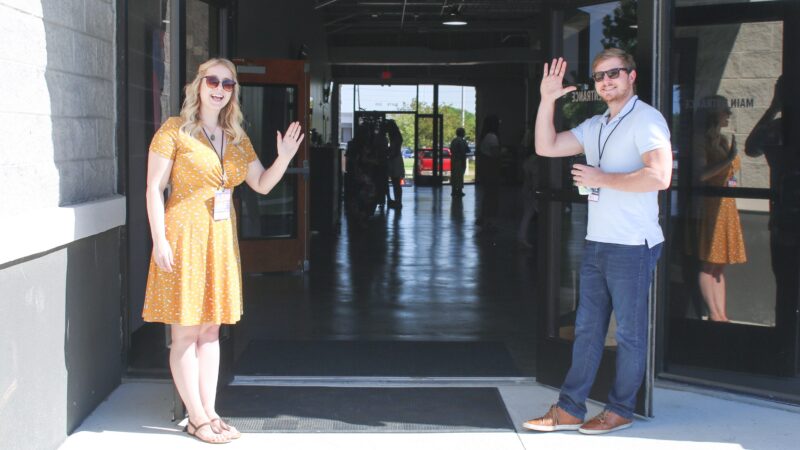5 Tips to Create a Culture of Connection
Updated 2 November 2022
Lack of connection isn’t just a culture problem – it’s a business problem.
Earlier this year, author and keynote speaker Adam Smiley Poswolsky wrote in Harvard Business Review that the “Great Resignation” can also be understood as the “Great Disconnection.”
He writes: “Employee disconnection is one of the main drivers of voluntary turnover, with lonely employees costing U.S. companies up to $406 billion a year. Research by Cigna shows that lonely employees have a higher risk of turnover, lower productivity, more missed days at work, and lower quality of work.”
If building a culture of connection feels like a monumental challenge in this new hybrid/remote work environment, you’re not alone. London HR Connection recently hosted a panel discussion on this very topic, with actionable tips you can take back to your organization. Here are some high-level takeaways from the conversation.
- Build connections before day one
- Keep communication open
- Start a mentor program
- Encourage regular check-ins
- Don’t underestimate the importance of off-boarding
Build connections before day one.

“Taking on a new job is a life-changing decision,” said Hannah Hafenrichter, global people experience manager at Enboarder. “So when you go through that pre-boarding, it’s the opportunity to confirm to that candidate why they’re joining. Get them excited about the organization.”
Don’t just leave the responsibility of onboarding to front-line managers. Setting new hires up with buddies and introducing them to key stakeholders across the organization early can help build that social capital early in their tenure.
“For us, everything sits in Enboarder,” said Beca Taylor, internal communications and engagement manager at Dermalogica. “It’s completely revolutionized our onboarding experience for managers and new hires.”
If you’re not sure where to begin with onboarding, just ask. “Listen to your people,” suggested Beca. “Ask them what was missing. What did they enjoy the most? What made them feel connected?”
Keep communication open.

“People communicate in different ways,” said Alan Wilson, people operations manager at Tarabut Gateway. “We have all hands meetings, culture club, social Slack channels, regular check-ins from the manager, which Enboarder is really effective at helping us facilitate.”
Even with all these lines of communication, it’s critical to request and act on feedback. “We listen during onboarding and we’re tracking eNPS scores,” said Alan. “More importantly, it’s about going back and telling people what you’ve done with what they’ve told you.”
Start a mentor program.
Beca shared that Dermalogica has recently created a leadership program that matches 20 high-potential employees with senior leaders in the organization. “That’s allowing us to connect our leadership team with the top talent in the business,” she said.
Make sure your mentor program has some structure and guidance around roles and responsibilities. For the mentor, outline “what’s expected of them in this role, even guidance on when you meet with your mentee and what that conversation looks like,” said Hannah. And the same goes for mentees.
Encourage regular check-ins.
Few things are more discouraging than an annual review that feels like it’s coming from left field. “If you have enabled your managers to have those quality conversations with their employees, it helps with things like end-of-year appraisals,” said Ben Benjamin Kandebe, customer success coach at Culture Amp.
These conversations should also be about more than just the work itself. “It’s about being able to talk about things like your mental health and how external things going on outside of work might be affecting your experience in the workplace,” shared Ben.
Does hybrid and remote work make this more challenging? Absolutely. “We don’t have those natural meetings anymore,” said Hannah. “If technology can help to drive those nudges, then great.”
Don’t underestimate the importance of off-boarding.

Just as connection is built before day one, it doesn’t end with an employee’s resignation. “The employee experience is a continuous journey,” said Hannah. Off-boarding “is a really important moment in the employee life cycle and for the employer brand.”
So that means the exit interview shouldn’t just be about ticking the box. Really be open to listening to feedback and learning from an employee’s experience. They might be connected to your next referral, or about to leave you a review on Glassdoor.
Especially for regrettable attrition, celebrate people’s success, said Alan (and we would argue you should do that long before someone gives their notice!). “Give people a great experience and make it positive. Expressing gratitude is one of the most powerful things you can do,” he said.